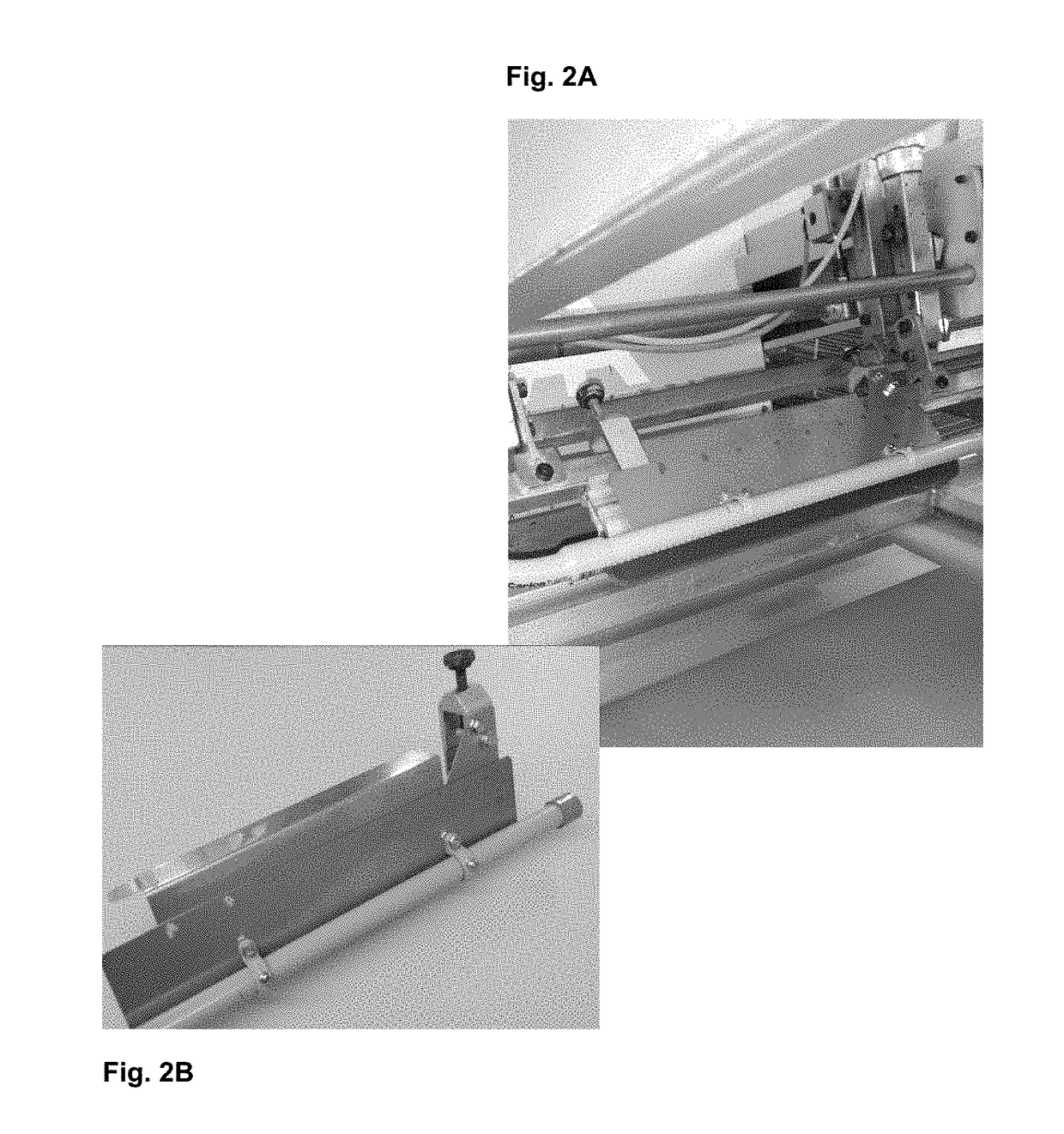Method for Printing and Transfer Onto a Food Item
a food item and printing technology, applied in the field of printing and printing transfer onto food items, can solve the problems of unsatisfactory transfer quality, unsuitable for mass production of decorated foodstuffs, and relatively slow techniques, and achieve the effect of maintaining the necessary ink viscosity
- Summary
- Abstract
- Description
- Claims
- Application Information
AI Technical Summary
Benefits of technology
Problems solved by technology
Method used
Image
Examples
example 1
Printing on Carrier Medium
[0078]The paste of edible ink is preferably deposited on the carrier medium by a screen printing process. Printing may also be carried out by offset printing or digital printing.
[0079]After a drying time under radiant heat, the baking paper called “carrier medium” is cut according to the customer's requirements.
example 2
Humidifying System Integrated with the Printing Machine
[0080]FIG. 2 shows a humidifying system integrated with a screen printing machine so that the ink paste retains the viscosity necessary for suitable printing.
[0081]Briefly, the system comprises an ultrasonic humidifier as well as a perforated-nozzle pipe system that makes it possible to create a controlled humid environment in the printing zone.
example 3
Flexible Carrier Media
Baking Paper
[0082]After conducting tests on several types of baking paper, we adopted baking paper with a minimum of silicone (FIG. 3) paper 24# BLEACHED GREASEPROOF C2S CODE 1309, manufactured by Glassine Canada Inc., with ingredients complying with the FDA (section 21 CFR 176,30, substances used in the manufacture of paper and cardboard products used for purposes of food packaging with respect to the ingredients of paper in contact with aqueous and oily foodstuffs and 21 CFR 176,180 contact with dry foodstuffs).
Perforation of the Flexible Carrier Medium:
[0083]However, after several transfer tests that were not optimal (FIG. 4A), we developed a system for perforating the carrier medium (FIG. 4B). The baking paper is passed over a cylinder with needles (FIG. 5).
Perforation allows:[0084]the paper to follow the shape and adhere to the surface of the food dough, which eliminates marks from the paper on the dough and holes in the bread;[0085]heat to circulate under...
PUM
| Property | Measurement | Unit |
|---|---|---|
| Fraction | aaaaa | aaaaa |
| Fraction | aaaaa | aaaaa |
| Fraction | aaaaa | aaaaa |
Abstract
Description
Claims
Application Information
 Login to View More
Login to View More - Generate Ideas
- Intellectual Property
- Life Sciences
- Materials
- Tech Scout
- Unparalleled Data Quality
- Higher Quality Content
- 60% Fewer Hallucinations
Browse by: Latest US Patents, China's latest patents, Technical Efficacy Thesaurus, Application Domain, Technology Topic, Popular Technical Reports.
© 2025 PatSnap. All rights reserved.Legal|Privacy policy|Modern Slavery Act Transparency Statement|Sitemap|About US| Contact US: help@patsnap.com



